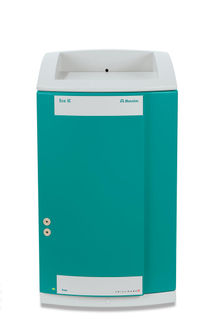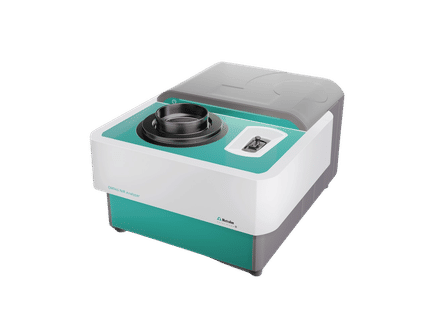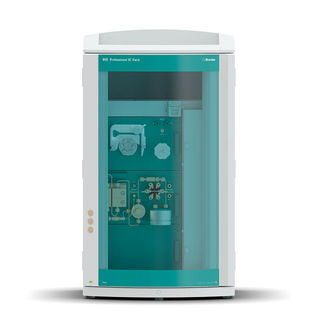Transcription coregulator
| Transcription factor glossary
|
| • transcription - copying of DNA by RNA polymerase into messenger RNA
|
| • factor - a substance, such as a protein, that contributes to the cause of a specific biochemical reaction or bodily process
|
| • transcriptional regulation - controlling the rate of gene transcription for example by helping or hindering RNA polymerase binding to DNA
|
| • upregulation, activation, or promotion - increase the rate of gene transcription
|
| • downregulation, repression, or suppression - decrease the rate of gene transcription
|
| • coactivator - a protein which works with transcription factors to increase the rate of gene transcription
|
| • corepressor - a protein which works with transcription factors to decrease the rate of gene transcription
|
| edit
|
In the field of molecular biology, transcription coregulators are proteins that interact with transcription factors to either activate or repress the transcription of specific genes.[1] Transcription coregulators that activate gene transcription are referred to as coactivators while those that repress are known as corepressors. The mechanism of action of transcription coregulators is to modify chromatin structure and thereby make the associated DNA more or less accessible to transcription. One class of transcription coregulators modifies chromatin structure through covalent modification of histones. A second ATP dependent class modifies the conformation of chromatin.[2]
Histone acyltransferases
Nuclear DNA is normally tightly wrapped around histones rendering the DNA inaccessible to the general transcription machinery and hence this tight association prevents transcription of DNA. At physiological pH, the phosphate component of the DNA backbone is deprotonated which gives DNA a net negative charge. Histones are rich in lysine residues which at physiological pH are protonated and therefore positively charged. The electrostatic attraction between these opposite charges is largely responsible for the tight binding of DNA to histones.
Many coactivator proteins have intrinsic histone acetyltransferase (HAT) catalytic activity or recruit other proteins with this activity to promoters. These HAT proteins are able to acylate the amine group in the sidechain of histone lysine residues which makes lysine much less basic, not protonated at physiological pH, and therefore neutralizes the positive charges in the histone proteins. This charge neutralization weakens the binding of DNA to histones causing the DNA to unwind from the histone proteins and thereby significantly increases the rate of transcription of this DNA.
Many corepressor can recruit histone deacetylase (HDAC) enzymes to promoters. These enzymes catalyze the hydrolysis of acylated lysine residues restoring the positive charge to histone proteins and hence the tie between histone and DNA. PELP-1 can act as a transcriptional corepressor for transcription factors in the nuclear receptor family such as glucocorticoid receptors.[3]
Nuclear receptor coactivators
Nuclear receptors bind to coactivators in a ligand dependent manor. A common feature of nuclear receptor coactivators is that they contain one or more LXXLL binding motifs (a contiguous sequence of 5 amino acids where L = leucine and X = any amino acid) referred to as NR (nuclear receptor) boxes. The LXXLL binding motifs have been shown by X-ray crystallography to bind to a grove on the surface of ligand binding domain of nuclear receptors.[4] Examples include:
- ARA54 (androgen receptor associated protein 54) RNF14
- ARA55 (androgen receptor associated protein 55) TGFB1I1
- CBP (cAMP response element-binding (CREB) protein-binding protein) (CREB1)
- CRTC1 (CREB regulated transcription coactivator 1) CRTC1
- CRTC2 (CREB regulated transcription coactivator 2) CRTC2
- CRTC3 (CREB regulated transcription coactivator 3) CRTC3
- CARM1 (coactivator-associated arginine methyltransferase 1) CARM1
- NCOA1 (nuclear receptor coactivator 1)/SRC-1 (steroid receptor coactivator-1)/ NCOA1
- NCOA2 (nuclear receptor coactivator 2)/GRIP1 (glucocorticoid receptor interacting protein 1)/ TIF2 (transcriptional intermediary factor 2) NCOA2
- NCOA3 (nuclear receptor coactivator 3)/AIB1 (amplified in breast) NCOA3
- NCOA4 (nuclear receptor coactivator 4)/ARA70 (androgen receptor associated protein 70) NCOA4
- NCOA5 (nuclear receptor coactivator 5) NCOA5
- NCOA6 (nuclear receptor coactivator 6) NCOA6
- NCOA7 (nuclear receptor coactivator 7) NCOA7
- p300 EP300
- PCAF (p300/CBP associating factor) PCAF[5]
- PGC1 (proliferator activated receptor gamma coactivator 1)
- PPARGC1A (PPARGC1A)
- PPARGC1B (PPARGC1B)
- PNRC1 (proline-rich nuclear receptor coactivator 1) PNRC1
- PNRC2 (proline-rich nuclear receptor coactivator 2) PNRC2
Nuclear receptor corepressors
Corepressor proteins also bind to the surface of the ligand binding domain of nuclear receptors, but through a LXXXIXXX(I/L) motif of amino acids (where L = leucine, I = isoleucine and X = any amino acid).[6] In addition, copressors bind preferentially to the apo (ligand free) form of the nuclear receptor (or possibly antagonist bound receptor).
- CtBP 602618 SIN3A (associates with class II histone deacetylases)
- LCoR (ligand-dependent corepressor) (LCOR)
- NCOR1 (Nuclear receptor CO-Repressor) (NCOR1)
- NCOR2 (Nuclear receptor CO-Repressor) (NCOR2)/SMRT (Silencing Mediator (co-repressor) for Retinoid and Thyroid-hormone receptors) (associates with histone deacetylase-3[3])
- Rb (retinoblastoma protein) RB1 (associates with histone deacetylase-1 and -2)
- RCOR (REST corepressor)
- RCOR1 (RCOR1)
- RCOR2 (RCOR2)
- RCOR3 (RCOR3)
- Sin3
- SIN3A (SIN3A)
- SIN3B (SIN3B)
- TIF1 (transcriptional intermediary factor 1)
- TRIM24 Tripartite motif-containing 24 (TRIM24)
- TRIM28 Tripartite motif-containing 28 (TRIM28)
- TRIM33 Tripartite motif-containing 33 (TRIM33)
Dual function activator/repressors
- NSD1 (NSD1)
- PELP-1 (proline, glutamic acid and leucine rich protein 1) PELP1
- RIP140 (receptor-interacting protein 140) NRIP1
ATP-dependent remodeling factors
- SWI/SNF family
- chromatin structure remodeling complex
- ISWI protein SMARCA1, SMARCA2
See also
References
- ^ Glass CK, Rosenfeld MG (2000). "The coregulator exchange in transcriptional functions of nuclear receptors". Genes Dev 14 (2): 121-41. doi:10.1101/gad.14.2.121. PMID 10652267.
- ^ Kingston RE, Narlikar GJ (1999). "ATP-dependent remodeling and acetylation as regulators of chromatin fluidity". Genes Dev 13 (18): 2339-52. doi:10.1101/gad.13.18.2339. PMID 10500090.
- ^ a b Choi YB, Ko JK, Shin J (2004). "The transcriptional corepressor, PELP1, recruits HDAC2 and masks histones using two separate domains". J Biol Chem 279 (49): 50930-41. doi:10.1074/jbc.M406831200. PMID 15456770.
- ^ Shiau AK, Barstad D, Loria PM, Cheng L, Kushner PJ, Agard DA, Greene GL (1998). "The structural basis of estrogen receptor/coactivator recognition and the antagonism of this interaction by tamoxifen". Cell 95 (7): 927-37. doi:10.1016/S0092-8674(00)81717-1. PMID 9875847.
- ^ Vadlamudi RK, Wang RA, Mazumdar A, Kim Y, Shin J, Sahin A, Kumar R (2001). "Molecular cloning and characterization of PELP1, a novel human coregulator of estrogen receptor alpha". J Biol Chem 276 (41): 38272-9. doi:10.1074/jbc.M103783200. PMID 11481323.
- ^ Xu HE, Stanley TB, Montana VG, Lambert MH, Shearer BG, Cobb JE, McKee DD, Galardi CM, Plunket KD, Nolte RT, Parks DJ, Moore JT, Kliewer SA, Willson TM, Stimmel JB (2002). "Structural basis for antagonist-mediated recruitment of nuclear co-repressors by PPARalpha". Nature 415 (6873): 813-7. doi:10.1038/415813a. PMID 11845213.
| Transcription coregulators |
|---|
| Coactivators | CARM1 - CRTC1 - CBP - NCOA1 (SRC-1) - NCOA2 (GRIP1/SRC-2/TIF2) - NCOA3 (AIB/SRC-3/TRAM-1) - NCOA4 - NCOA6 - NCOA7 - PPARGC1A - PPARGC1B - TGFB1I1 |
|---|
| Corepressors | NCOR1 - NRIP1 - NCOR2 (SMRT) - PELP-1 - RCOR1 - Rb - SIN3A- SIN3B - Tripartite motif-containing (TRIM24, TRIM28) |
|---|
| ATP-dependent remodeling factors | Chromatin Structure Remodeling (RSC) Complex - SWI/SNF |
|---|
|







